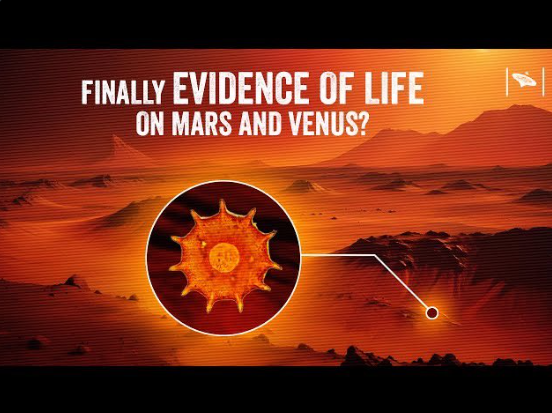Life finds a way, as they say. There is life on Earth where it is hundreds of degrees hot under the ocean, where life should not exist. Perhaps on Venus as well.
Venus enthusiasts are having a moment of vindication, as recent findings bring more clarity to the mysterious planet. For years, many have doubted the possibility of life on Venus, dismissing it as a scorched, inhospitable wasteland. However, four years ago, scientists discovered phosphine, a gas linked to life processes, in Venus’s clouds. This discovery sparked both excitement and skepticism, but now, researchers have more data to back up their claims, leaving skeptics reconsidering their stance.
Life Found on Mars & Venus? New Evidence Shocks Scientists!https://t.co/yBtTyR71Ng pic.twitter.com/Ni5jlBtzga
— Chris Lehto (@chrisotis78) July 30, 2024
On July 17, at the Royal Astronomical Society meeting in Hull, England, the team responsible for the phosphine discovery presented their latest findings. Using the James Clerk Maxwell Telescope in Hawaii, they conducted three more observational campaigns, each revealing more about Venus’s atmosphere. The most significant campaign provided “140 times as much data” as the initial study, according to Dave Clements, an astrophysics reader at Imperial College London.
The new data confirmed the presence of phosphine and uncovered another surprising element—ammonia. Ammonia, like phosphine, is not expected in Venus’s environment, making its detection particularly intriguing. Clements, who also works on the ammonia research, described this finding as “more significant” than the phosphine discovery.
Hints of life found on #Mars and #Venus.
NASA’s Perseverance Mars Rover has found a rock that may be evidence Mars hosted past microbial life. Analysis by onboard instruments indicate that the rocks “exhibits chemical signatures and structures that could possibly have…
— Owen Lewis (@is_OwenLewis) July 29, 2024
For those less familiar with the significance of these gases, here’s a quick explanation. Venus’s atmosphere is primarily carbon dioxide with clouds of sulfuric acid, a combination that should make the presence of phosphine and ammonia impossible. These gases typically require hydrogen, which is not abundant on Venus. Their unexpected presence suggests that unknown processes, potentially biological, might be occurring.
Some skeptics have proposed that the detected gas might actually be sulfur dioxide, not phosphine. Despite these doubts, the research team remains committed to their investigation, believing there is more to discover about Venus’s atmosphere.
These discoveries are causing quite a stir in the scientific community. Venus, often overlooked in favor of Mars in the search for life, is now capturing the spotlight. The new findings could change our understanding of this enigmatic planet and the potential for life beyond Earth.
Signs Of Life Found On #Venus Are Tearing Apart The Scientific. Things I’ve read make great arguments there is life single cell n more. Community #Mars #Earth #Astronomy as physics with new tools r breaking through past E=MC2 travel past light speed Ect!!https://t.co/6xn1mLZ4mA
— Kenny Sommer (@edgerkjs) July 31, 2024
Major Points:
- Four years ago, scientists discovered phosphine in Venus’s clouds, a gas associated with life processes, sparking debate and skepticism.
- Recent studies using the James Clerk Maxwell Telescope in Hawaii provided significantly more data, confirming the presence of phosphine and revealing additional findings.
- The researchers also detected ammonia, another unexpected gas in Venus’s atmosphere, suggesting unknown processes might be occurring.
- Some skeptics argue that the detected gas could be sulfur dioxide instead of phosphine, but the research team remains focused on investigating further.
- These discoveries could change our understanding of Venus and its potential to support life, highlighting the need for continued exploration and study.
Fallon Jacobson – Reprinted with permission of Whatfinger News



